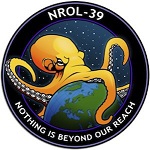
By that metric, kelvin would be even better though.

by that metric
Americans cannot understand any metric

2 liter bottle.
Checkmate, athiests.

Also we have electric, water and gas meters smh

This is why I say ‘metre’ for the measure and ‘meter’ for the measurement device
And Demeter for the harvest

In point of fact Americans have gotten impressive results out of far more complicated metrics than metric. It’s not a matter of understanding, it’s a matter of pride. And of not having to buy all new tools.

You mean it’s THREE HUNDRED AND FOURTEEN FUCKING DEGREES OUTSIDE?!

Please raise this temperature by 1.4x10^-23 Joules - statements of the utterly deranged

Joules are energy. You need thermal capacity to turn them into temperature.

OK, but with Rankine, if it’s 101 out, you can go Five Hundred and SIXTY degrees??!

For proof that this thread is just people justifying what they know as better somehow, look no further than Canada.
We do cooking temps in Fahrenheit, weather in Celsius. Human weights in pounds, but never pounds and oz. Food weights in grams, cooking weights in pounds and oz. Liquid volume in millilitres and litres, but cooking in cups, teaspoons and tablespoons. Speed & distance in kilometres, heights in feet and inches.
Try and give this any consistency and people will look at you like you’re fucked. The next town is 100km over, I’m 5ft 10in, a can of soda is 355ml, it’s 21c out and I have the oven roasting something at 400f. Tell me it’s 68f out and I will fight you.
People like what they are used to, and will bend over backwards to justify it. This becomes blatantly obvious when you use a random mix of units like we do, because you realize that all that matters is mental scale.
If Fahrenheit is “how people feel” then why are feet useful measurements of height when 90% of people are between 4ft and 6ft? They aren’t. You just know the scale in your head, so when someone says they’re 7ft tall you say “dang that’s tall”. That’s it.

We do cooking temps in Fahrenheit, weather in Celsius.
Fahrenheit: let’s use “really cold weather” as zero and “really hot weather” as 100.
Celsius: let’s use “freezing water” as zero, and “boiling water” as 100.
Canucks:


This makes a lot of sense, and why I’d never survive in Canada.

If Fahrenheit is “how people feel” then why are feet useful measurements of height when 90% of people are between 4ft and 6ft?
Those are two different things. Hope this helps.

It doesn’t help at all, it’s being intentionally obtuse. You know what I mean, it’s unhelpful to pretend otherwise and pick a fight over it.

If an argument is being made for one thing, Fahrenheit, it’s not relevant to bring up a different thing. Why is feet a useful measurement? Maybe it’s not, we’re talking about temperature.

i still don’t see how this is intentionally obtuse, feet are a mid point between inches and yards, it just makes sense to break down things over a certain amount to a much more palatable scale. Everyone knows roughly what 1 ft is, and everyone knows roughly what 1 inch is. Paired together you can get a pretty rough and accurate guesstimate of height. I feel like it’s also pretty expected for it to be within the range of 4-6 ft. Most people don’t really measure feet outside of that range, unless you’re doing construction.
humans are a comparatively arbitrary height so i feel like you’re just complaining about the height of humans being weirdly arbitrary? Out of all the systems you could use for height, ft and in is pretty well tuned to the human nature, you’re not gonna do much better.

Outdoor temperature in °C, unless you’re talking about an outdoor pool then it’s often enough °F :-)
I think part of the reasons it’s so mixed might just be due to how many Amero-centric devices and parts are common between the two countries.
Y’all can take your shitty Phillips screws though. Roberts is by far superior ;-)

Imagine weighing people as big rocks, though.
Until the UK changes that, us Americans and Canadians can rest assured that nothing we are doing is quite that ridiculous.

Tell me it’s 68f out and I will fight you.
Note to self: High heat levels make Canadians cranky.

then why are feet useful measurements of height when 90% of people are between 4ft and 6ft? They aren’t. You just know the scale in your head, so when someone says they’re 7ft tall you say “dang that’s tall”. That’s it.
to be clear, we use feet and inches, and there is historical precedent for breaking things down once they get past a certain grouping, we only have 10 fingers after all. To me the difference between 200cm and 220 is literally fuck all. You ask me the difference between 4 ft and 6ft and i can pretty quickly tell you.
I find it weird that when measuring height in metric, people using cm exclusively, i’ve noticed this a lot actually, people will use cm or mm in places where it arguably doesn’t make any sense. I could see the justification for doing math maybe, but like, that defeats the whole point of it being metric no?
Shouldn’t you be using meters and cm for height specifically? Since most people are a good bit over one meter i feel like it would make sense to do it that way. But then again that’s just kind of a shit bucket worth of options you have, ideally you would use decimeters, but nobody uses those things for some reason.

Most of Europe just uses metres for people’s height. 1.67m, like that. I have no mental picture of that, so it doesn’t work for me. But they don’t seem to have any trouble, further evidence that it’s all just what you know.

hm, that’s weird, i’ve seen this first hand in a handful of cases, guess i just get the weird ones. Granted i still see it holding true in things like construction, where i guess it makes more sense, but it seems weirdly arbitrary to me.

I find it weird that when measuring height in metric, people using cm exclusively, i’ve noticed this a lot actually, people will use cm or mm in places where it arguably doesn’t make any sense. I could see the justification for doing math maybe, but like, that defeats the whole point of it being metric no?
Why is that defeating the whole point of being metric? If you know someone is 183 cm tall, you also know that they are 1.83 m tall. If its easier to say the length in cm, you do. No need for “one meter and eighty-three centimeters” or “one point eighty-three meters”, just “a hundred and eighty-three centimeters”. Often you just skip saying the “centimeters” part as well, because most people can see that you’re not the size of a skyscraper without getting a ruler out.

yeah idk, i guess it’s just weird to me, because here in the us if you measured someones height in inches alone, you would be chased out of a room. We strictly use feet and inches, and then yards if referring to a more “broad” range. So you can very safely assume something is in feet and inches if its just two numbers stuck together.
I feel like i could very easily get confused with metric if i’m not running a consistent rule for default units. Seems like an easy way to get a random x10 error in there to me.

As you pointed out previously, nobody uses decimeters, so x10 errors are not that common.

i’m just gonna say that the joke here is that it was a 10x error. But that’s retroactive, so.

TWO HUNDRED AND SEVETY THREE KELVIN I’M FREEZING

Once again… the classic argument of: “Well, I grew up using this system, and I’m used to the system. I have built an internal intuition for how hot and cold the temperature is. I am used to >100 being hot! 40 is not hot!”
Well then. I grew up using celcius and… “IT’S FOURTY FUCKING ONE DEGREES OUTSIDE?” sounds just as hot.

The joke
Your head

No… I get it… 41 < 105… I totally agree haha funny joke. I’m just over this debate. Who gives a fuck what temperature scale you use? Just use the one you know. We have conversions for that reason.

No, that’s not it, we’re measuring in incredulity units, which are syllables.
“One hun-dred and se-ven?!” == 6 syllables
“For-ty one?!” == 3 syllables
Also, the first one has more vowel sounds to really draw out to indicate higher levels of I-can’t-even. It sounds only golly-jeepers in Celsius, and much more I’m-so-done-with-this-shit in Fahrenheit.

Ah true.

41°C sounds terrifying to me

Sounds like a great time to propose my system of temperature: Super Celsius. I’ll connect it to the freezing and boiling points of water just like Celsius, but while freezing remains at 0, boiling is now 1000. Get ready for a nice mild day of 250.

Kilocelsius

I’m kilosweating

Milicelsius = 0.001ºC
Kilocelsius = 1000ºC

we could use the freezing and boiling points of humans, for a change

but is that dead or (at least recently) alive humans? for dead humans that’s about the same as just straight up water isn’t it?

Lets ditch base10 entirely and use 0(freezing)-216(boiling). that means 0-1000 in base6.

In Ali Baba and the 40 Thieves, the number of thieves wasn’t really necessarily 40. The number was likely just chosen because 40 was an exaggerated number, much like when we’d say “I’ve told you a hundred million times”. So 40 as a shorthand for “a huge amount” seems fitting in celcius.

What about 101 Dalmatians?

How did the mother dog (no I’m not gonna use that word) not die?

The puppies did not have the same mother. Cruella had been collecting them from all over the place.

Ohhhhhh… you just cleared up something I believed for 20 years

Ah America, bigger is always a better isn’t it?

That’s why I only use Kelvin. 314.15 sounds like 3 times more “WTF HOW HOT IS TODAY??!?” than your paltry 107

I present the temperature scale that I made up- the Human Scale (H°)
I thought about the Fahrenheit vs Celsius debate, and I think both have practical uses, however I think combined they could make a very practical scale.
Fahrenheit: while my American sensibilities agree that 100° is a good marker for what % of my patience is used up to cut a bitch, I think a similar place would be the average human body temperature. For this reason, 100°H = 98.6°F . It’s not a perfect match, but it can still give us the satisfaction of “IT’S 100°!?” while having practical implications for medical uses “your body temperature is 102°, 2° warmer than average”.
Celsius: I think this scale makes a ton of sense for colder temperatures. When the thermometer reads 0°, that’s when you can expect snow. For this reason, 0°H = 0°C.
The conversation rates are:
H = (F-32) × 1.5
H= C × 2.7
More precise is
H = (F-32) × 1.501501501…
H = C × 2.7027027027…
While using the freezing point of water and the average human body temperature seem like inconsistent and arbitrary benchmarks, my goal is less about consistency and more about practicality for everyday use.
Now watch this scale grow as big as Esperanto.

This… Is actually a pretty good idea.
There’s a few meme images around that Celsius is how water “feels” and Fahrenheit is how people feel (and Kelvin is how atoms feel), which isn’t entirely off base…
But frankly, I would support human scale more than Fahrenheit. I live in a country with Celsius, and my only real gripe with it is that whole degrees are not very precise. You have to go to half-degrees, or even 1/10th of a degree to get reasonable precision on temperature.
Just seems like the human scale would work well for 90% of use cases, aside from science where we should be using either Celsius or Kelvin.

good point, but to us Celsius fans or “Celsilovers” over one hundred sounds like the apocalypse.

Which is the closest thing to a legitimate criticism of celcius that exists. The entire top half of the scale (everything over ~50°, that is) is pretty much useless as far as judging the weather is concerned.

Top half? 0-50°C is the top half. The bottom half is -50-0°C.

Fuck it. I’m inventing a new scale.
Behold! “Disagree Degrees”. We’re going to combine the best traits of the other units. No more searching for the stupid little degree character in the character map. D for degrees or disagrees - whatever, I don’t give a shit.
0D = 0K (Like Kelvin, no negatives! That’s so dumb!) 0.4D = -40 C and -40 F 1D = Water Freezing point (Need a consistent point of scale) 10D = “Pleasant temperature” 100D = Kind of hot 500D = Really hot for people (>40C or >100F) “It’s like 500 disagrees out there!” 1000D= Water boiling (To match the freezing temp) 1,000,000,000,000D = Surface of the sun
Good luck on the math converting to other units, this temperature scale isn’t about being useful for nerd stuff, it’s all about appealing to our emotions.

I hate that I agree with this lol

What? 100°F is too mild. It doesn’t even boil water!

mild in what way? Do you live in death valley??? Have you ever experienced 100f? You can literally get heat exhaustion, and heat stroke from temperatures of 110f pretty easily if you aren’t watching yourself, we remind ourselves of this constantly anytime it gets hot.

mild in what way?
It doesn’t even boil water.
Have you ever experienced 100f?
It’s slightly above my core body temperature. So yes, literally I experience it all the time.
You can literally get heat exhaustion, and heat stroke from temperatures of 110f pretty easily
Sauna. It’s literally boiled water. And it’s pretty safe for average human.

It doesn’t even boil water.
yeah and? Last i checked i’m not a pot of water.
It’s slightly above my core body temperature. So yes, literally I experience it all the time.
to be clear, it’s not slightly above, it’s high enough that you’re getting into fever range, a few degrees over that and it starts to become deadly. 105f internal temp is potentially fatal so.
the average body temperature ranges about 2 degree fahrenheit. 97f to 99f that’s about the entire extent of that. 100F specifically is slightly over that in terms of general temperature experience.
Sauna. It’s literally boiled water. And it’s pretty safe for average human.
thank god, i was about to do hard labor in a sauna. Not to mention this is also a sauna, not direct infrared and UV exposure to direct sunlight. Not to mention the literal temperature of the environment around it, and the indirect reflected heating that you’ll receive.
guess i should now argue that cold temperatures aren’t dangerous because people do ice baths regularly.

“Bigger number is more better” also explains American sports where you get 3 points for running a bit and then play stops for an ad break and the national anthem.

I mean… assuming you’re talking about American football, there’s at least one scoring move that awards one point, so it makes sense for more difficult scoring moves to give more points. The harder the action is to complete, the more points you get for doing it.

